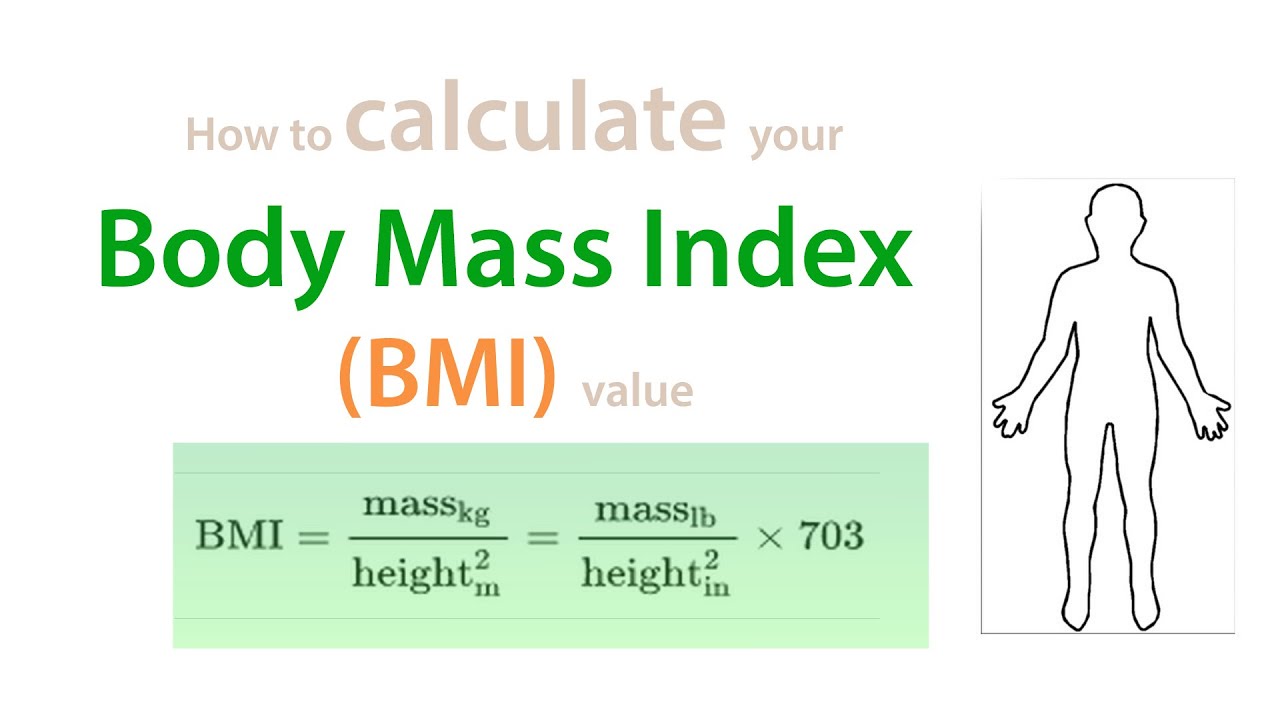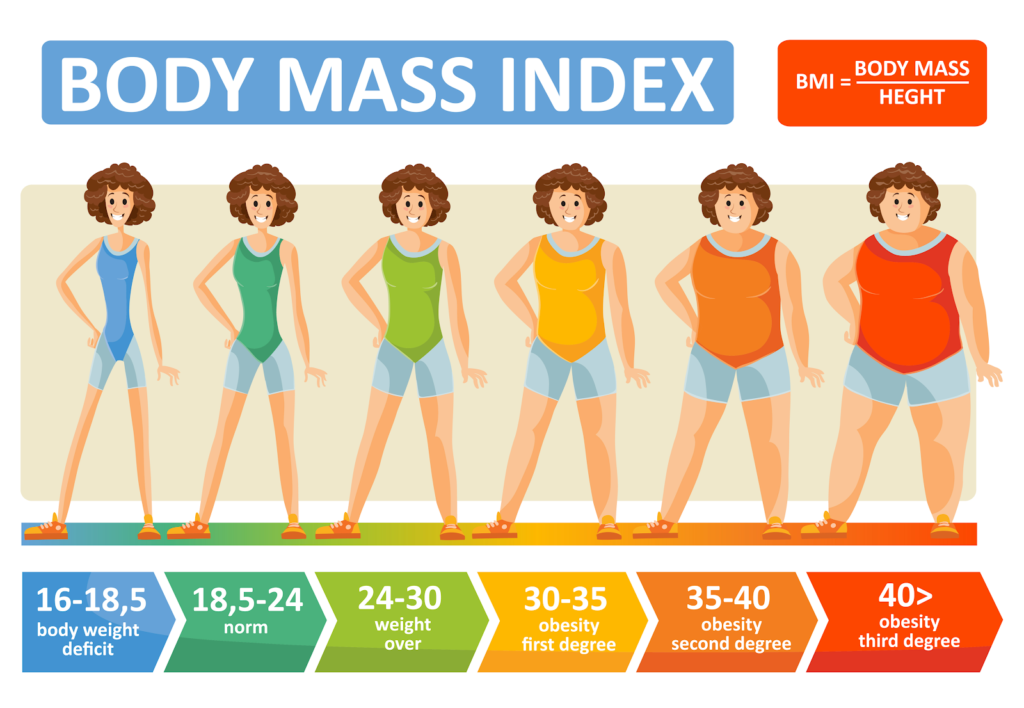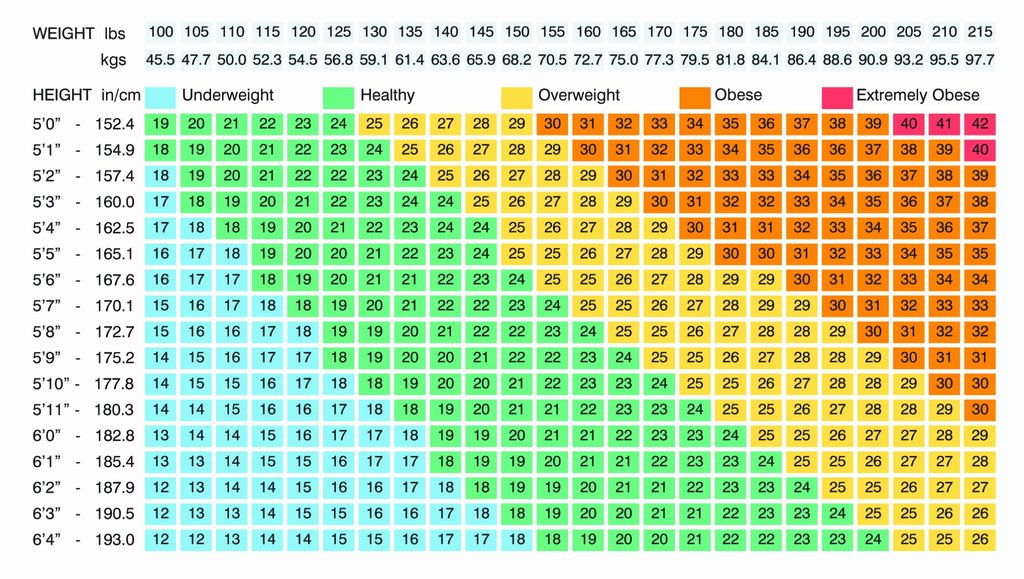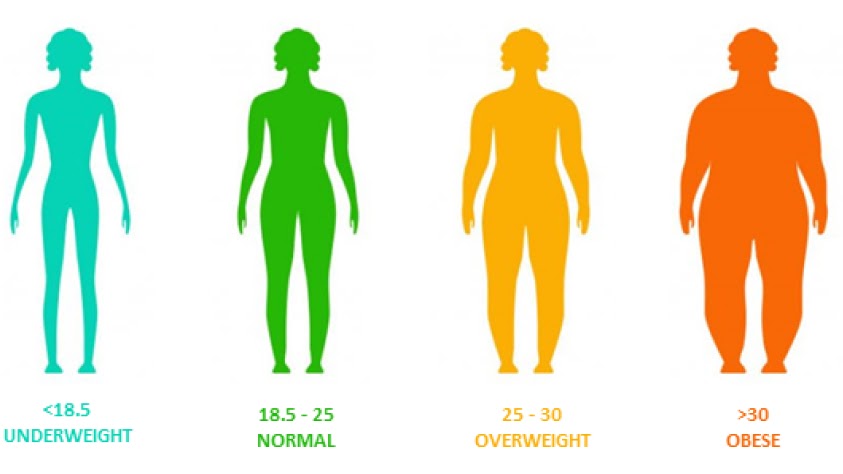How To Calculate BMI? A Step-by-Step Guide To Calculation
Discover the key to understanding your health with this guide on how to calculate BMI. Learn the simple steps to assess your body weight in relation to your height, gaining insights into potential health risks and wellness. Uncover the significance of BMI in health assessments and take control of your well-being through informed decisions based on this essential measurement.
Author:Katharine TateReviewer:Karan EmeryOct 04, 202326.8K Shares447K Views

Body Mass Index (BMI) is a widely used measure that helps assess an individual's body weight in relation to their height. It is a valuable tool for gauging whether a person has a healthy body weight or falls into categories such as underweight, normal weight, overweight, or obese. So, how to calculate BMI?
This guide provides a detailed explanation of what BMI is, its significance, and how to calculate BMI accurately.
What Is BMI?
BMI is a numerical value derived from an individual's weight and height. It is a simple yet effective screening tool used by healthcare professionals to categorize individuals into different weight status groups. BMI is not a direct measurement of body fat, but it serves as an indicator of whether a person has a healthy weight for their height.
BMI Categories
- Underweight -BMI less than 18.5
- Normal Weight -BMI 18.5 to 24.9
- Overweight -BMI 25 to 29.9
- Obese -BMI 30 or greater
Understanding The Importance Of BMI In Health Assessment
Body Mass Index (BMI) is a vital tool in assessing and understanding an individual's overall health and weight status. Its importance lies in its ability to provide a quick, easily accessible, and cost-effective method for healthcare professionals and individuals alike to gauge whether a person's weight is within a healthy range. Here are several key reasons why BMI holds significance:
Health Risk Assessment
- Cardiovascular Diseases - BMI is closely linked to the risk of cardiovascular diseases. Individuals with a high BMI, especially in the obese category, are more prone to conditions like heart disease and hypertension.
- Diabetes - High BMI is a known risk factor for Type 2 diabetes. Maintaining a healthy BMI can contribute to diabetes prevention and management.
Treatment Planning
- Weight-Related Interventions -BMI serves as a guide for healthcare professionals to determine whether weight-related interventions are necessary. This could involve dietary changes, increased physical activity, or, in extreme cases, medical interventions.
Public Health Planning
- Obesity Epidemic - BMI data is crucial for public health planning, particularly in addressing the global obesity epidemic. It helps identify trends in weight status, allowing for the development of strategies to address associated health issues.
Early Intervention
- Identifying At-Risk Individuals -BMI is a valuable tool for identifying individuals at risk of weight-related health problems. Early intervention, based on BMI assessment, can prevent the progression of certain health conditions.
Health Promotion
- Encouraging Healthy Lifestyles -BMI provides individuals with a tangible measure of their weight status. This information can motivate and guide them toward adopting healthier lifestyles, including better dietary choices and increased physical activity.
Monitoring Health Progress
- Tracking Changes Over Time -Individuals can use BMI as a metric to monitor changes in their weight over time. This is particularly beneficial for those on weight management journeys or engaging in fitness programs.
Identification Of Underweight
- Nutritional Deficiencies - BMI is not only relevant for identifying overweight and obesity but is also crucial in recognizing underweight individuals who may be at risk of malnutrition and nutritional deficiencies.
How To Accurately Calculate BMI?
Calculating BMI involves a simple mathematical formula that considers an individual's weight and height. It's important to note that while BMI is a useful screening tool, it doesn't directly measure body fat percentage or distribution. Here's a step-by-step guide on how to accurately calculate BMI:
Measure Weight
Obtain an accurate measurement of your weight. Use a reliable scale, and record the weight in either kilograms or pounds.
Measure Height
Measure your height in either meters or inches. Ensure accurate measurements, and record the height accordingly.
Choose The Appropriate Formula
- If using the metric system (kilograms and meters), the formula is: BMI = (Weight in kilograms) / (Height in meters)^2.
- If using the imperial system (pounds and inches), the formula is: BMI = (Weight in pounds) / (Height in inches)^2 x 703.
Plug In The Values
Substitute the recorded weight and height values into the chosen formula.
Calculate BMI
Perform the calculations to determine the BMI value. The result is a numerical value that indicates your body mass index.
Interpret The Result
Compare the calculated BMI value to standard categories:
- Underweight -BMI less than 18.5.
- Normal Weight -BMI 18.5 to 24.9.
- Overweight - BMI 25 to 29.9.
- Obese -BMI 30 or greater.
Consider Additional Factors
While BMI provides valuable information, it's important to consider additional factors such as muscle mass, body composition, and health conditions for a comprehensive health assessment.
Regular Monitoring
For individuals focusing on weight management or health improvement, it's advisable to regularly calculate and monitor BMI. Changes in lifestyle or health conditions may influence BMI over time.
Consultation With Healthcare Professionals
Individuals with concerns about their BMI or those seeking guidance on weight-related issues should consult healthcare professionals. They can provide personalized advice and interventions.
Holistic Health Approach
While BMI is an important metric, a holistic approach to health includes other assessments such as waist-to-hip ratio, body fat percentage, and consideration of overall health indicators.
Interpreting BMI Results
Interpreting Body Mass Index (BMI) results is a crucial step in understanding one's weight status and potential health risks. BMI values fall into specific categories, each indicating a different weight status. Here's a detailed look at how to interpret BMI results:
Underweight (BMI Less Than 18.5)
Individuals in this category may have a BMI indicating insufficient body weight relative to their height.
- Health Risks - Underweight individuals might be at risk of nutritional deficiencies, weakened immune systems, and osteoporosis.
- Recommendations -A healthcare professional should be consulted to assess and address the potential causes of being underweight. Nutritional counseling and monitoring may be recommended.
Normal Weight (BMI 18.5 To 24.9)
Falling within this range suggests that an individual's weight is proportionate to their height.
- Health Risks -Individuals in this category generally have a lower risk of weight-related health issues such as cardiovascular diseases and diabetes.
- Recommendations -Maintaining a healthy lifestyle, including a balanced diet and regular physical activity, is encouraged for overall well-being.
Overweight (BMI 25 To 29.9)
Individuals in this category have a BMI indicating excess body weight relative to their height.
- Health Risks - Overweight individuals may be at an increased risk of developing conditions like hypertension, heart disease, and Type 2 diabetes.
- Recommendations -Lifestyle modifications, including dietary changes and increased physical activity, are often recommended to manage weight and reduce health risks.
Obese (BMI 30 Or Greater)
Falling into the obese category indicates a significant excess of body weight in relation to height.
- Health Risks - Obesity is associated with a higher risk of severe health conditions, including cardiovascular diseases, sleep apnea, and certain cancers.
- Recommendations -Interventions for weight management, under the guidance of healthcare professionals, are essential. This may include a combination of diet, exercise, and, in some cases, medical treatments.
Considerations And Limitations Of Using BMI As A Body Fat Measure
While BMI is a widely used and valuable tool, it comes with considerations and limitations that individuals and healthcare professionals should be aware of:
Muscle Mass And Body Composition
- Consideration - BMI doesn't distinguish between muscle and fat. Athletes with high muscle mass may have a higher BMI without excess body fat.
- Limitation - It may misclassify muscular individuals as overweight or obese.
Age And Gender Differences
- Consideration -BMI norms can vary by age and gender, especially in children and adolescents. Pediatricians use specific charts for these age groups.
- Limitation - Using a single BMI standard for all age groups may not be accurate.
Waist-to-Hip Ratio
- Consideration -Assessing the distribution of body fat, such as through waist-to-hip ratio, provides additional insights.
- Limitation -BMI alone doesn't provide information on fat distribution, which can impact health risks.
Individual Health Factors
- Consideration -Other health risk factors, such as blood pressure, cholesterol levels, and family history, should be considered alongside BMI.
- Limitation - Relying solely on BMI may overlook other crucial health indicators.
Pregnancy
- Consideration - BMI may not be suitable for assessing weight status during pregnancy. Healthcare providers use different criteria for pregnant women.
- Limitation -Using standard BMI charts during pregnancy can lead to inaccurate assessments.
Elderly Population
- Consideration - BMI may need to be interpreted differently in the elderly population, where muscle mass and bone density may change.
- Limitation - Using standard BMI categories without considering age-related changes can be misleading.
Cultural And Ethnic Variations
- Consideration - Cultural and ethnic differences can influence body composition, and BMI norms may vary among populations.
- Limitation -A one-size-fits-all approach may not account for these variations.
Dynamic Nature Of Health
- Consideration - Health is dynamic, and factors such as lifestyle changes, aging, and medical conditions can influence weight status.
- Limitation - A single BMI measurement may not capture these dynamic changes over time.
Body Fat Percentage
- Consideration - For a more accurate assessment of body composition, methods that directly measure body fat percentage, like dual-energy X-ray absorptiometry (DEXA) or bioelectrical impedance analysis (BIA), can be considered.
- Limitation - These methods are more sophisticated and may not be as easily accessible as BMI measurements.
Psychosocial Factors
- Consideration - BMI does not consider psychosocial factors related to body image, mental health, and self-esteem.
- Limitation - Overemphasis on BMI alone may neglect the psychological aspects of health and well-being.
Alternative Methods For Assessing Body Composition
While Body Mass Index (BMI) is a valuable tool for assessing weight status, it is essential to recognize its limitations and incorporate additional health assessments for a more comprehensive understanding of an individual's health.
These supplementary assessments can provide insights into body composition, fat distribution, and overall well-being. Here are several additional health assessments that can be considered alongside BMI:
Body Fat Percentage
- Importance -Unlike BMI, which doesn't differentiate between muscle and fat, measuring body fat percentage provides a more accurate assessment of the proportion of fat in the body.
- Methods - Techniques such as dual-energy X-ray absorptiometry (DEXA), bioelectrical impedance analysis (BIA), and skinfold thickness measurements can estimate body fat percentage.
Waist-to-Hip Ratio (WHR)
- Importance - WHR assesses fat distribution, particularly around the abdominal area. An increased WHR may indicate a higher risk of cardiovascular diseases.
- Calculation - Divide the circumference of the waist by the circumference of the hips. A WHR of 0.85 or higher in women and 0.90 or higher in men is generally considered indicative of increased health risks.
Blood Pressure Measurement
- Importance - High blood pressure is a significant risk factor for cardiovascular diseases. Regular blood pressure monitoring is crucial for assessing heart health.
- Categories - Blood pressure is categorized into normal, elevated, and various stages of hypertension. Maintaining a healthy blood pressure range is essential for overall well-being.
Cholesterol Levels
- Importance -Abnormal cholesterol levels, particularly high levels of LDL (low-density lipoprotein) cholesterol, are associated with an increased risk of heart disease.
- Components - Cholesterol assessment includes measuring total cholesterol, HDL (high-density lipoprotein) cholesterol, LDL cholesterol, and triglycerides.
Blood Glucose Levels
- Importance -Elevated blood glucose levels can indicate insulin resistance or diabetes. Regular monitoring is crucial for diabetes prevention and management.
- Categories - Fasting blood glucose levels and HbA1c levels are commonly measured to assess blood glucose control.
Physical Fitness Assessments
- Importance -Assessing physical fitness provides insights into overall health and the efficiency of the cardiovascular and musculoskeletal systems.
- Components -Tests such as the aerobic capacity test, strength assessments, and flexibility tests contribute to a comprehensive understanding of fitness.
Bone Density (DEXA Scan)
- Importance -DEXA scans are used to measure bone density and assess the risk of osteoporosis. Low bone density can increase the risk of fractures.
- Recommendations -Particularly important for postmenopausal women and individuals with risk factors for osteoporosis.
Nutritional Assessments
- Importance - Evaluating nutritional status goes beyond weight. It involves assessing the intake of essential nutrients, vitamins, and minerals.
- Methods -Food diaries, dietary recalls, and consultations with registered dietitians can provide valuable information about nutritional habits.
Mental Health Screenings
- Importance -Mental health is a crucial aspect of overall well-being. Screenings for conditions such as depression and anxiety can be important in understanding holistic health.
- Methods -Standardized questionnaires and assessments are used to evaluate mental health conditions.
Genetic Testing
- Importance - Understanding genetic predispositions can provide insights into potential health risks and guide personalized health management strategies.
- Applications - Genetic testing can identify susceptibility to certain conditions, such as cardiovascular diseases or metabolic disorders.
FAQs
Can BMI Accurately Measure Body Fat Percentage?
No, BMI is not a direct measure of body fat percentage. It provides a general indication of weight status but doesn't differentiate between muscle and fat. Additional assessments, like body fat percentage measurements, may be needed for a more accurate evaluation.
What Are Some Health Risk Factors Associated With High BMI?
High BMI is associated with an increased risk of health issues, including cardiovascular diseases, diabetes, and hypertension. It's important to manage weight for overall health.
Can BMI Be Used For Children And Adolescents?
Yes, BMI can be used for children and adolescents, but age and gender-specific charts are used for a more accurate assessment. Pediatricians often use BMI-for-age percentiles.
What Are Alternative Methods To Assess Body Composition?
Alternative methods include measuring waist-to-hip ratio, which assesses fat distribution, and using more sophisticated techniques like DEXA or BIA to directly measure body fat percentage.
How Often Should One Calculate Their BMI?
It's recommended to calculate BMI periodically, especially during routine health check-ups. Changes in lifestyle or health conditions may influence BMI over time.
Can BMI Alone Provide A Complete Picture Of One's Health?
No, BMI is a screening tool. For a comprehensive health evaluation, considering additional assessments such as blood pressure, cholesterol levels, and family history is important. Regular health check-ups provide a holistic view of one's health.
How Do I Calculate My BMI?
You can calculate it by diving the weight of a person in kilograms (or pounds) with the square of their height in meters (or feet).
Conclusion
The body mass index (BMI) is a metric that uses your height and weight to determine whether or not your weight is healthy. It is commonly used to determine whether a person has a healthy body weight for their height.
So, how to calculate BMI? Calculating BMI is a straightforward process that involves measuring weight and height, plugging these values into a formula, and interpreting the results.
While BMI has its limitations, it remains a widely used screening tool in healthcare settings. For a more comprehensive understanding of one's health, additional assessments and consideration of other risk factors are recommended. Regular health check-ups and consultations with healthcare professionals are essential for personalized health management.

Katharine Tate
Author

Karan Emery
Reviewer
Latest Articles
Popular Articles


